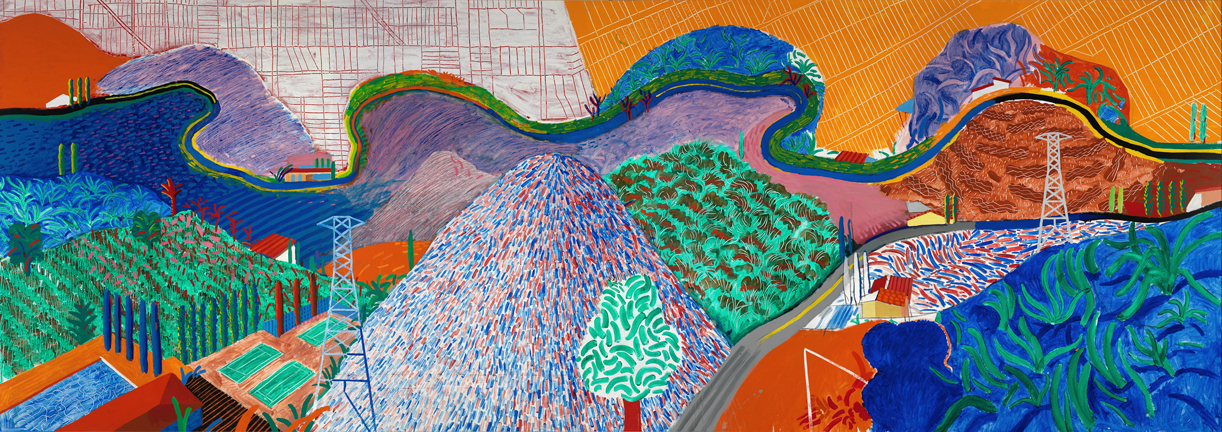Unusually, he painted the scene from memory and completed it within a few weeks, in spite of its colossal size.
Hockney took inspiration from Picasso and cubism throughout his career, especially early on. His paintings typically feature straight lines and angular shapes, and although these can be found in Mulholland Drive, they are accompanied by some more unusual curved lines. This slight change of style marked a turning point in the direction of his work.
As the painting is so vast and colourful, it can be somewhat overwhelming to look at. This is likely no accident, as it perfectly reflects the way a newcomer to Los Angeles might feel.
In places, the artist has scratched away the wet paint to create flowing lines. These lines convey the constant movement of the city of Los Angeles, especially its winding roads.
Hockney explores the contrast between the urban landscape – buildings, pylons and tennis courts – and the trees and rolling hills which surround it. He effectively conveys that the city is not separate from nature, but intertwined with it.
The artist denotes distance by clearly defining the objects in the foreground, whilst reducing those in the background to blocks of colour and texture. Driving is central to the culture of Los Angeles, and this has been conveyed by making the winding road the defining feature of the painting. The viewer’s eyes inevitably follow it from one side of the canvas to the other, enhancing the sense of movement in the scene.
The very top of the painting is filled with grids – Hockney copied these from a street map of Los Angeles, and as such, they represent the suburbs of the city. This feature injects some realism into what is otherwise a somewhat abstract work.


